Generative AI: 7 Steps to Enterprise GenAI Growth in 2024
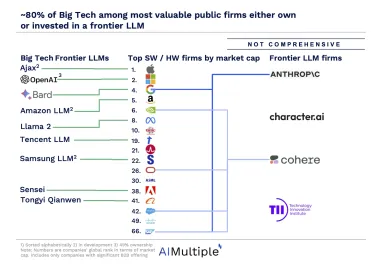
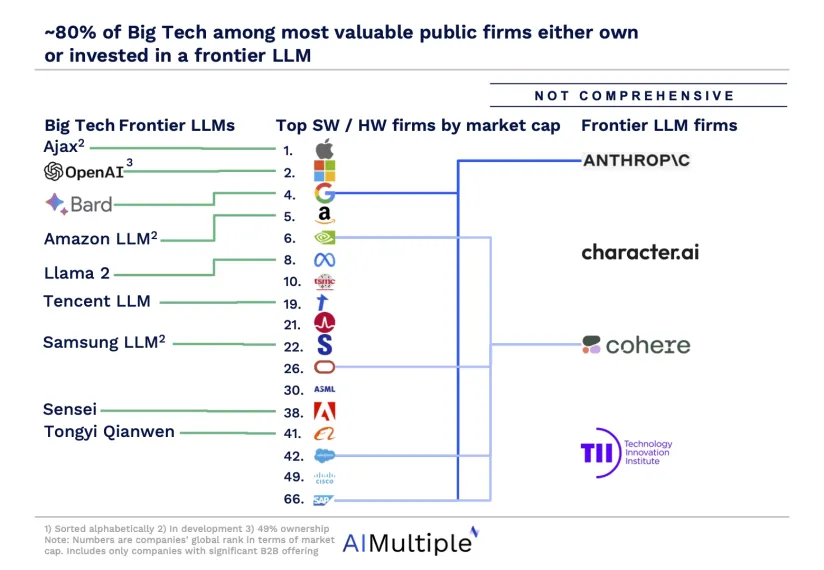
Generative AI is a new buzzword that emerged with the fast growth of ChatGPT. Generative AI leverages AI and machine learning algorithms to enable machines to generate artificial content such as text, images, audio, and video content based on its training data (llm data). As you can see above most Big Tech firms are either building their own generative AI solutions or investing in companies building large language models.
Generative AI faces certain challenges concerning data privacy, use in fraudulent or criminal acts as well as hallucination.
In this article, we explore what generative AI is, how it works, pros, cons, applications and the steps to take to leverage it to its full potential.
7 Step GenAI growth guideline for businesses
- Identify generative AI use cases in your life or your business. Most white-collar activity revolves around creating new text, images or video so there should be many possible activities. To successfully achieve this, businesses need to
- rethink their organization structures
- educate employees on the potential of generative AI
- embrace rapid experimentation.1
- Rank these use cases by their suitability to generative AI. These processes tend to be more easy to automate with generative AI:
- Is there relevant data (e.g. text or images) in public or private data that can inform the model? For example, you can’t expect a large language model to write about a completely new technology since it wouldn’t have ingested any text about that topic.
- Is the output subjective or objective? Due to issues like hallucination, generative AI solutions have the potential to make mistakes when faced with tasks that can be evaluated using objective criteria. For example, generative AI models solving math problems can make mistakes.
- What are the error tolerance and error mitigation strategies? If the model output can be evaluated subjectively or objectively, there will be cases when its results disappoint. Such cases need to be mitigated by humans-in-the-loop but that may not be possible if this is a process where the machine needs to respond within miliseconds.
- Rank these use cases by ROI. Considering both benefits and the cost to use generative AI in your business flows, you can identify top priority projects
- Design the new process. The new process may involve additional human-in-the-loop or integrations for a simple workflow.
- Select the generative AI tool to leverage
- Run a pilot with clear targets and measure results. For example, you may have picked generating blog posts as a use case for your pilot. To understand if generative AI brings benefits, you may need to ask:
- Are the new blog posts better or worse than manual ones in the dimensions that matter to you?
- How much effort is saved?
- Identify improvements and roll-out the new process: For example, you may have run the pilot with the users using the generative AI application online while completing a task on an internal desktop app. Screen switching can be a productivity reducer and integrating generative AI in your applications leveraging APIs can unlock additional savings which need to be considered during go-live.
We dived straight into what to do about generative AI. For more context, let’s continue with the foundations:
What is Generative AI?
Generative AI is the technology to create new content by utilizing existing text, audio files, or images. With generative AI, computers detect the underlying pattern related to the input and produce similar content. This is in contrast to most other AI techniques where the AI model attempts to solve a problem which has a single answer (e.g. a classification or prediction problem).
There are various techniques such as:
- Transformers:Transformers, such as GPT-3, LaMDA, Wu-Dao and ChatGPT imitate cognitive attention and differentially measure the significance of the input data parts. They are trained to understand the language or image, learn some classification tasks and generate texts or images from massive datasets.
- Generative adversarial networks (GANs): GANs are two neural networks: a generator and a discriminator that pit against each other to find equilibrium between the two networks:
- The generator network is responsible for generating new data or content resembling the source data.
- The discriminator network is in charge of differentiating between the source and the generated data in order to recognize what is closer to the original data.
- Variational auto-encoders:
- The encoder encodes the input into compressed code while the decoder reproduces the initial information from this code.
- If chosen and trained correctly, this compressed representation stores the input data distribution in a much smaller dimensional representation.
What are the applications of Generative AI?
Content generation
- Text generation: Generative AI tools can create textual output and carry out conversations with users. ChatGPT is an example of a conversational generative AI tool. Feel free to check our in-depth article on AI text generation for more.
- Generating photographs of human faces, objects and scenes from seed images: Generative AI can produce real looking photographs.

- Text to image translation: It can produce realistic photographs from textual descriptions of simple objects like birds and flowers. DALL-E is a popular text-to-image translation tool.

- Other content generation: Generative AI can also be leveraged to
- render items from scratch when actuated through 3D printing, CRISPR, and other technologies.
- write software code.
Image-to-image conversions
Image-to-image conversion: Translating an image to another. Examples include
- Black and white photographs to color
- Day photos to night photos
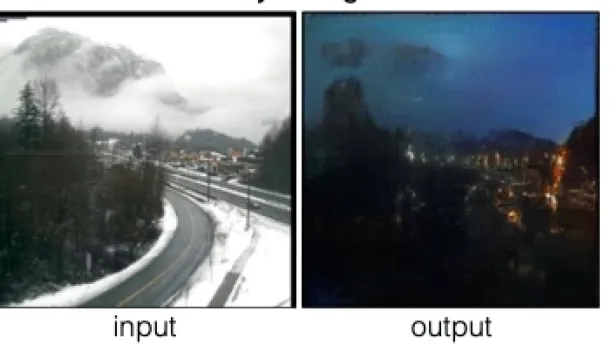
- A photo to a painting of specific artistic style

- Satellite photos to google maps views
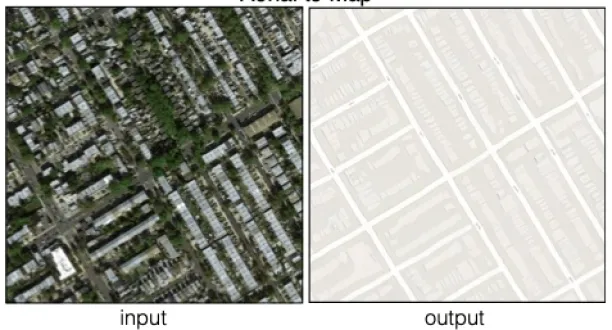
- Semantic-Image-to-Photo Translation: Converting input that are semantic images or sketches to photo realistic images.
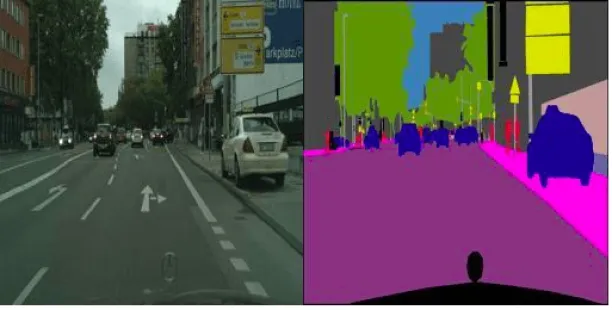

- Face Frontal View Generation: It generates front-on photos from photos taken in different angle for a face verification or face identification system.

- Photos to emojis: Changing real photos to emojis or small cartoon faces.

- Face aging: Generating older versions of faces from a young face photo.
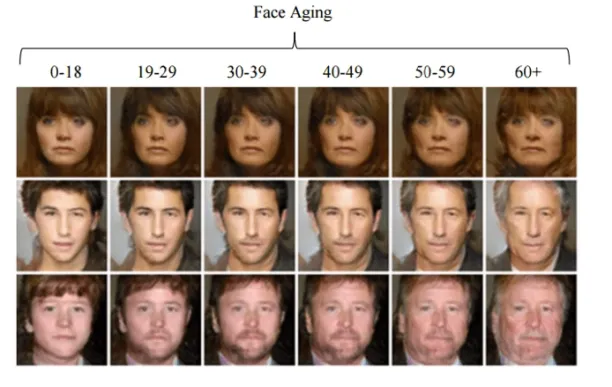
Video related applications
- Video-to-video conversion (e.g. film restoration): It can improve old images and old movies by upscaling them to 4K and beyond. For example, it can generate 60 frames per second instead of 23 or less, eliminate the noise, and add colors.
- Content localization: Deep fake technology is applied to localize content (e.g.: dubbing and moderating) while distributing it across the globe in media and entertainment industry. By using face synthesis and voice cloning, artist’s/actor’s original voice can be matched with a lip-sync.
Feel free to check our articles on industry-specific applications of generative AI:
- Top 4 Use Cases of Generative AI in Banking
- Generative AI in Healthcare: Benefits, Challenges, Potentials
- Top 5 Use Cases of Generative AI in Education
- Generative AI in Fashion: 5 Use Cases with Case Studies
Or our comprehensive list on the applications of generative AI.
What are the benefits of Generative AI?
- Overall: Many professions will be impacted by generative AI as the capabilities mature. Generating text, images and video is a large part of current human effort. Automating that even partially has great potential
- Identity Protection: Generative AI avatars provide protection for people who do not want to disclose their identities while interviewing or working.
- Robotics control: Generative modeling helps reinforcement machine learning models to be less biased and comprehend more abstract concepts in simulation and the real world.
- Healthcare: Generative AI enables early identification of potential malice to create effective treatments. For example, GANs compute different angles of an x-ray image to visualize the possible expansion of the tumor.
What are the challenges of Generative AI?
- Security: Some people can use Generative AI for fraudulent purposes like scamming people.
- Overestimation of capabilities: Generative AI algorithms require an enormous amount of training data to perform tasks. Yet, GANs cannot create entirely new images or texts. They only combine what they have been trained on in different ways. That is why some computer scientists refer to them as “stochastic parrots”.
- Hallucination: In some models of Generative AI like GANs, models may produce unexpected results.
- Data privacy: Health-related applications involve privacy concerns on individual-level data.
- Copyrights: Generative AI copyrights is a topic of ongoing legislation and court proceedings.
Read our article on Stability AI to learn more about an ongoing discussion regarding the challenges generative AI faces.
Is generative AI supervised learning?
Generative Adversarial Networks modeling (GANs) is a semi-supervised learning framework. Semi- supervised learning approach uses manually labeled training data for supervised learning and unlabeled data for unsupervised learning approaches to build models that can make predictions beyond the labeled data by leveraging labeled data.
There are some benefits of GANs semi-supervised structure, which is an application of generative AI, against supervised learning, which include:
- Overfitting: Generative models tend to have fewer parameters, so it’s harder to overfit. Also, generative models engage with a tremendous amount of data due to the training process, making them more robust to occlusions.
- Human bias: In generative modeling, human labels are not apparent as in the supervised learning approach. The learning relies on the data properties, which allows avoiding spurious correlations.
- Model bias: Generative models do not generate samples similar to those in the training data. Therefore, the shape vs. texture issue vanishes.
If you want to benefit from the AI, you can check our data-driven lists for AI platforms, consultants and companies.
If you believe you need guidance to apply generative AI, let us help you to find the right vendor:
References
- 1. “The CEO’s Guide to the Generative AI Revolution“. BCG. March 7, 2023. Retrieved June 18, 2023.

Cem has been the principal analyst at AIMultiple since 2017. AIMultiple informs hundreds of thousands of businesses (as per similarWeb) including 60% of Fortune 500 every month.
Cem's work has been cited by leading global publications including Business Insider, Forbes, Washington Post, global firms like Deloitte, HPE, NGOs like World Economic Forum and supranational organizations like European Commission. You can see more reputable companies and media that referenced AIMultiple.
Throughout his career, Cem served as a tech consultant, tech buyer and tech entrepreneur. He advised businesses on their enterprise software, automation, cloud, AI / ML and other technology related decisions at McKinsey & Company and Altman Solon for more than a decade. He also published a McKinsey report on digitalization.
He led technology strategy and procurement of a telco while reporting to the CEO. He has also led commercial growth of deep tech company Hypatos that reached a 7 digit annual recurring revenue and a 9 digit valuation from 0 within 2 years. Cem's work in Hypatos was covered by leading technology publications like TechCrunch and Business Insider.
Cem regularly speaks at international technology conferences. He graduated from Bogazici University as a computer engineer and holds an MBA from Columbia Business School.
To stay up-to-date on B2B tech & accelerate your enterprise:
Follow on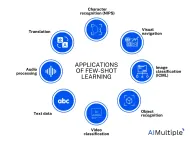

Comments
Your email address will not be published. All fields are required.